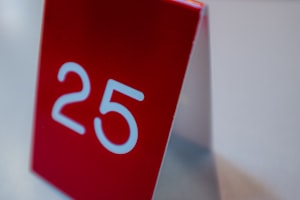The 2022 Women’s World Championships opens on August 25. Get ready to watch the start of a new tradition.
Schedule
We ended up with August hockey through the unlikely pairing of a pandemic and IIHF innovation. When Worlds were cancelled in 2020 and then again in 2021, the IIHF was forced to reschedule the 2021 tournament to August in Calgary in order to finally get the games played. The surprise to many was the success of the summer tournament, something not experienced by the Men’s World Junior Championship this year in Edmonton.
In the past, the women didn’t get a worlds in Olympic years; the schedule always seemed too full to the IIHF. But with the 2021 success, they decided to innovate and add an August worlds to the calendar in Olympic years, leaving the tournament set in the spring the rest of the time. And here we are, with the first event in this new era. This schedule allows the women to play a championship every year at a time that fits as well as possible with their Olympic, league and educational commitments, no matter the country they play in — more than can be said for the men’s championship.
Preliminary round play starts on Thursday and runs through to Tuesday, August 30. The quarterfinals, semifinals and medal games will be played from September 1 to 4.
Location
This year’s event is in Herning and Frederikshavn, Denmark. Leafs fans might remember Herning as the hometown of Frederik Andersen and a hotbed of Danish hockey. The Danes played in the Olympics this year for the first time, and the Danish women got the first Olympic victory by Denmark in hockey. Denmark likely comes the closest of all the nations represented in this championship to parity in the numbers of women and men who play hockey at all levels — remember, though, it’s a very small country. Most of the other countries are seeing more growth in women’s hockey than any other part of the game.
Denmark is six hours ahead of Toronto, so an evening game there is on in the afternoon in eastern Canada.
Groups and Tournament Format
Women’s hockey at worlds and the Olympics uses a format of tiered groups arranged by the current international ranking order. This order is based on past worlds and Olympics results. This year’s ranking was set after last year’s worlds and before the Olympics.
Group A is the top tier and is made up of the current top five nations in order:
- USA
- Canada
- Finland
- Switzerland
- Japan
As you know, Russia, who would have been fourth, has been banned from IIHF events, opening the door to a team usually in Group B to move up. Japan has the necessary points from the ranking system. The USA, which is now tied with Canada in rankings points, is still ranked in first place for this event.
Group B
6. Czechia
7. Germany
8. Sweden
9. Hungary
10. Denmark
Hungary won promotion into this group and finished ninth last time, and while Denmark is in the event as host, they were ranked 11th in 2021 and are now 10th, so they are definitely not in the wrong tournament. We won’t have the same issues experienced at the Olympics the last few years where everyone was tasked with pretending the host team was competitive. That said, Hungary and Denmark are most probably going to finish at the bottom of the standings.
Each group will play a round-robin set of four games each within the group. All teams in Group A advance to the quarterfinals, seeded by the results of the preliminary round. They are joined by the top three teams from Group B.
The team ranked last in Group B is relegated to Division I Group A (the next division down from the Championship teams) for next year. This year’s tournament in that group was held in the spring after two years of cancellation, and France was the winner, bringing them back to the championship group next year.
The eight teams in the quarterfinals play one vs eight and two vs seven, etc. Teams are then re-seeded for the semifinals.
All games that end in a tie go to overtime, and all overtime is three-on-three. In preliminary round play, the overtime is five minutes. In playoff games and the bronze-medal game it is 10 minutes, and in all cases a shootout will follow if necessary. In the gold-medal game, there is no shootout.
Like all IIHF tournaments a three-point system is used with three points for a regulation win, two for an overtime or shootout win and one for an overtime or shootout loss.
Because of the importance of the points-ranking system for teams, games are played between the losers of playoff round games to set the order of finish all the way down to 10. You’ll know you’ve met a hardcore fan if they are watching those games.
Game Schedule
The tournament opens on Thursday with Japan facing off against the USA at 9 am (all times North American Eastern Time).
Canada opens with their second toughest match of the preliminaries, facing Finland at 1 pm on Thursday.
Group A plays in the KVIK arena in Herning, while Group B plays in Frederikshavn in Iscenter Nord. The Herning arena seats just over 4,000, while the Frederikshavn arena holds 4,000 and seats 750.
The opening day Group B games are Germany vs Hungary and Denmark vs Sweden at 9:30 and 1:30 respectively.
The easiest place to find the games is on the IIHF site: https://www.iihf.com/en/events/2022/ww/schedule
TSN also has a schedule page: https://www.tsn.ca/hockey-canada/women-s-worlds/schedule
And I know what you want to know. The preliminary round Canada - USA game is the final game on Tuesday August 30 at 2 pm. It’s impossible to know the seedings for the quarterfinals until that game is played.
How to Watch
Like always, IIHF events are covered in full on TSN. All games in this tournament should be available streamed on TSN.ca, which is free with your television subscription that includes TSN. It’s also available to non TV subscribers for $20 per month.
The broadcast schedule (scroll down) focuses on Canada first, then Team USA and then whoever else is playing when they aren’t, so some of the early games in Group B will not be televised. It is unconfirmed if all these games will be on TSN.ca, as their schedule only lists broadcast channels.
The Teams
Rosters are official only when registered for the tournament, but all teams set unofficial rosters for the pretournament camp in Denmark. This was the Canadian lineup for their tune-up game where Denmark decided to get the worst possible game they could ever play out of the way. It’s like a polar swim to wake you up for the teams that aren’t quite this tough to play:
🇨🇦's setup against 🇩🇰 in #WomensWorlds pre-tournament action!
— Hockey Canada (@HockeyCanada) August 20, 2022
No stream available but follow @HockeyCanada for updates with stats available here ➡️ https://t.co/X4urkjSsqx. pic.twitter.com/0t0MQcXHla
Denmark lost 14-1 to what is likely Canada’s final lineup with some changes to who is in net for serious play. You will notice that Natalie Spooner is missing — she’s expecting a baby. Also not here are Olympians Rebecca Johnston and Melodie Daoust.
The biggest hit to Team USA is the loss of Dani Cameranesi to retirement. Megan Bozek on defence is also missing, and Brianna Decker is not ready to return from the broken leg she suffered in the Olympics. The rest of the big names, along with their excellent younger players are accounted for.
Here's how Team USA will be lining up today for their pre-tournament game vs. Canada. Puck drops in one hour! 🇺🇸#WomensWorlds pic.twitter.com/bWsCize69P
— USA Hockey (@usahockey) August 23, 2022
Other teams to watch: Czechia turned out to be one of the most interesting teams of 2021/2022. They made the the Olympics and performed very well there, and post-Olympics, (when the Leafs hired their coach to be a development coach for European prospects), the Czechs named the first woman head coach in the history of the Czech women’s program. This is a move supported by the players:
“We need more women’s coaches, staff and trainers in our country, because the players feel more comfortable working with them,” said Peslarova. “I know because that was my own experience, and I think it’s better for them to develop than doing the “old-school” male coaching approach.”
Canadian Carla MacLeod will be behind the bench for the Czechs. She played at the University of Wisconsin and in league play in the early 2000s. She also played in two Olympics and four world championships. She was head coach last year of the University of Calgary team, but also spent several years as an assistant coach with Team Japan.
Japan is another important team to watch. Vaulted into the top group, this is going to be a difficult tournament for them. The chances are high they will go winless in the preliminary round. The level of competition from three of their four competitors will be much higher than they would get in Group B. But this trial by fire is what teams need to really understand — at the player level, coaching level and within the federation — what they need to do to grow as a team. You have to find signs of growth in how Japan plays as they lose, which is tough to do, and cynics will just call them bad while they miss the point that they are still growing into the game as a nation.
Switzerland, Czechia, Japan and maybe Sweden (they’ve had a rocky history lately) have all grown their games in significant ways in recent years.
This tournament is going to be fun — just for the chance to stay awake for the third period after two Olympics in East Asia — but it’s also going to mark the end of an old era as well as the start of a new schedule. This is the last time women’s hockey will be as good as it is now.
From now on, it will only get better. The North American women are hungry to play meaningful games because they don’t get that at home once they leave school. This is going to change, and the game will never be the same. The European women are all pushing to make their leagues better, with more funding and support. They’re succeeding in frustratingly slow ways and their elite players want the chance to really earn a living playing hockey too. This will come.
Watch worlds this year for the Canada-USA rivalry, and to see which other teams are getting better. Which Sweden will show up? Does Japan have any scoring talent to go with their system skill? Does Germany have anything but athleticism and size? Is Switzerland really ready to take Russia’s place? How much closer is Finland to the top two?
The play at the Olympics this spring was the best women’s hockey tournament I’ve ever seen overall. There’s no reason this championship and all those to come won’t be better.





Comment Markdown
Inline Styles
Bold: **Text**
Italics: *Text*
Both: ***Text***
Strikethrough: ~~Text~~
Code: `Text` used as sarcasm font at PPP
Spoiler: !!Text!!